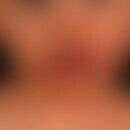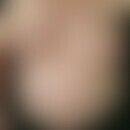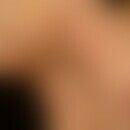DefinitionThis section has been translated automatically.
Isolated congenital choroidal matoglyphia is a very rare, autosomal dominant inherited, monotopic, non-syndromic disorder of the palms and soles. In this case, the papillary ridges are missing in the affected individuals. Thus, these individuals leave no fingerprints. The malformation is associated with a reduced number of sweat gland orifices and decreased transpiration of the palms and soles.
EtiopathogenesisThis section has been translated automatically.
The disorder is caused by a mutation in the SMARCAD1 gene on chromosome 4 (Nousbeck J et al. 2011). SMARCAD1 encodes a member of the SNF subfamily of helicase proteins (SMARCAD helicase). Evidence indicated a transversion in a splice site in a non-coding 3' lying exon of the SMARCAD1 gene. The point mutation results in a truncation of the gene product. The SMARCAD helicase mutant was also detected in the skin of the subjects.
You might also be interested in
ManifestationThis section has been translated automatically.
Newborn
Note(s)This section has been translated automatically.
The encoded SMARCAD helicase plays a crucial role in the restoration of heterochromatin organization and the propagation of epigenetic patterns after DNA replication by mediating histone H3/H4 deacetylation.
The mutation found in an affected Swiss family in 2011 is a point mutation in which a purine base is exchanged for a pyrimidine base (a so-called transversion). The point mutation leads to a shortening of the gene product and thus probably to a protein that is restricted in function.
A variant of isolated congenital choroidal matoglyphia is the so-called Basan syndrome in which congenital choroidal matoglyphia is combined with facial milia, reduced sweating, contactures, acral blistering, and nail dystrophies. (Valentine MN et al 2018)
Outgoing links (1)
SMARCAD1 Gene;Disclaimer
Please ask your physician for a reliable diagnosis. This website is only meant as a reference.





